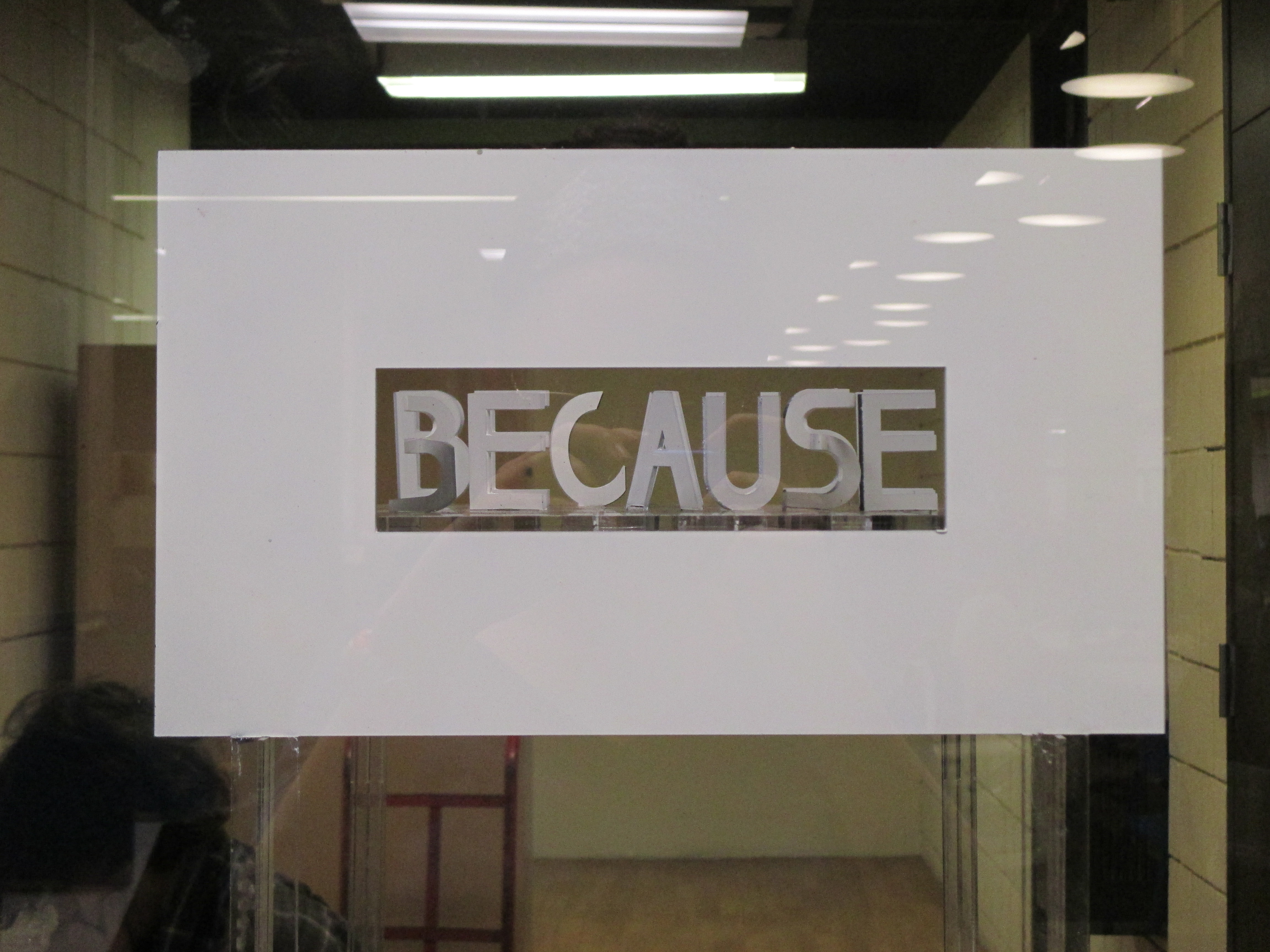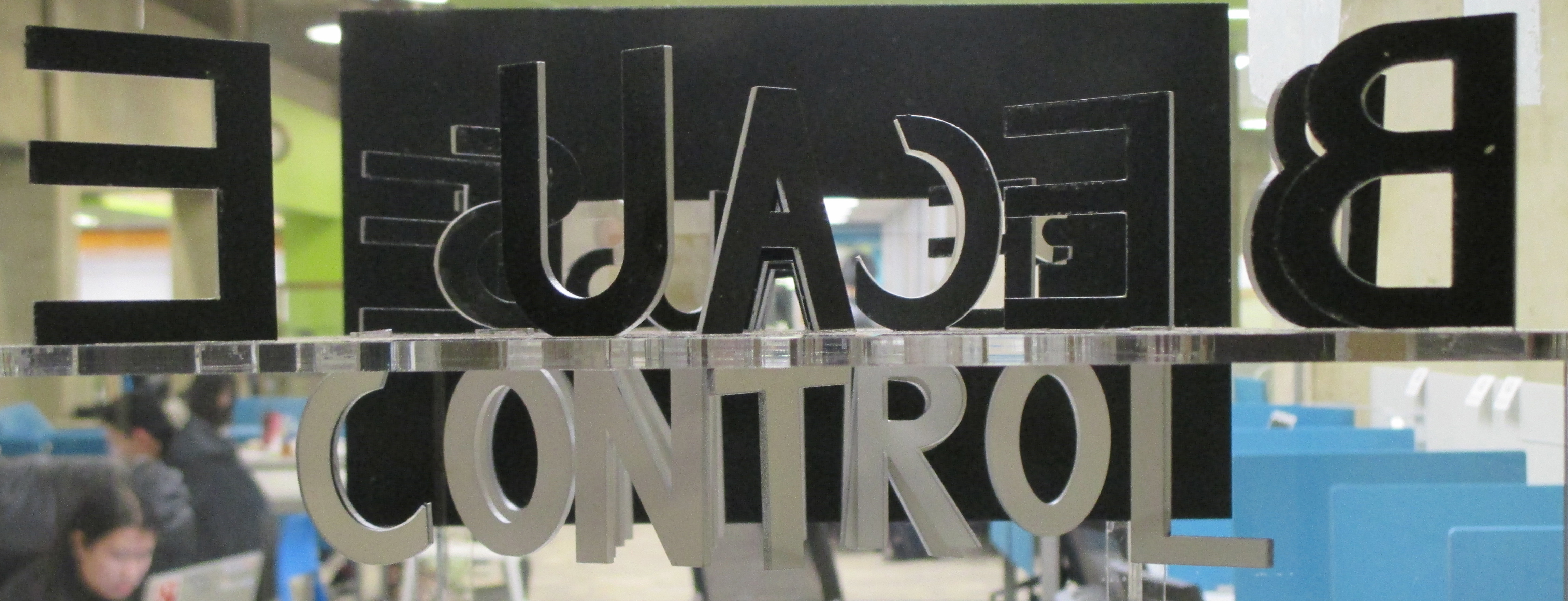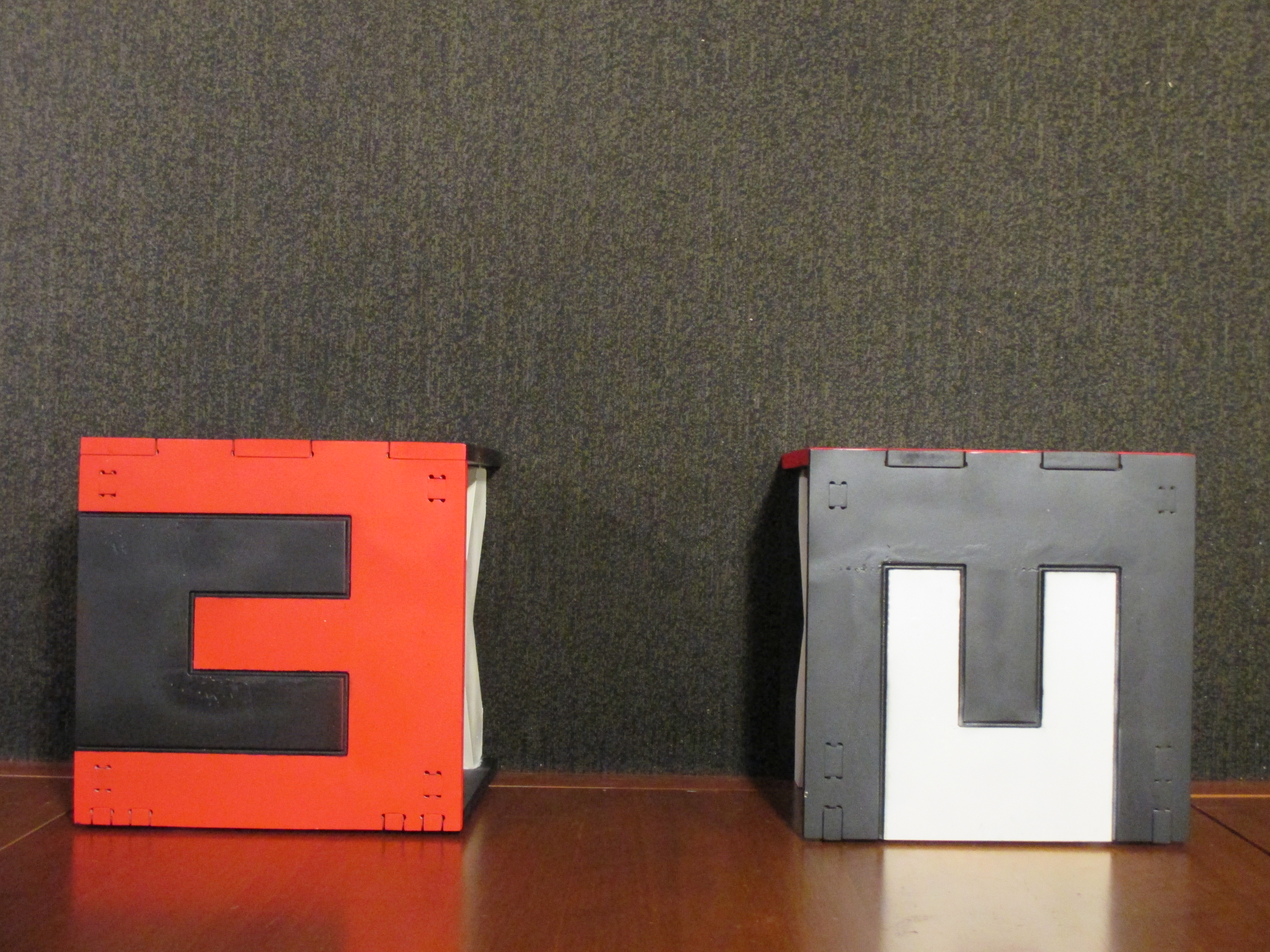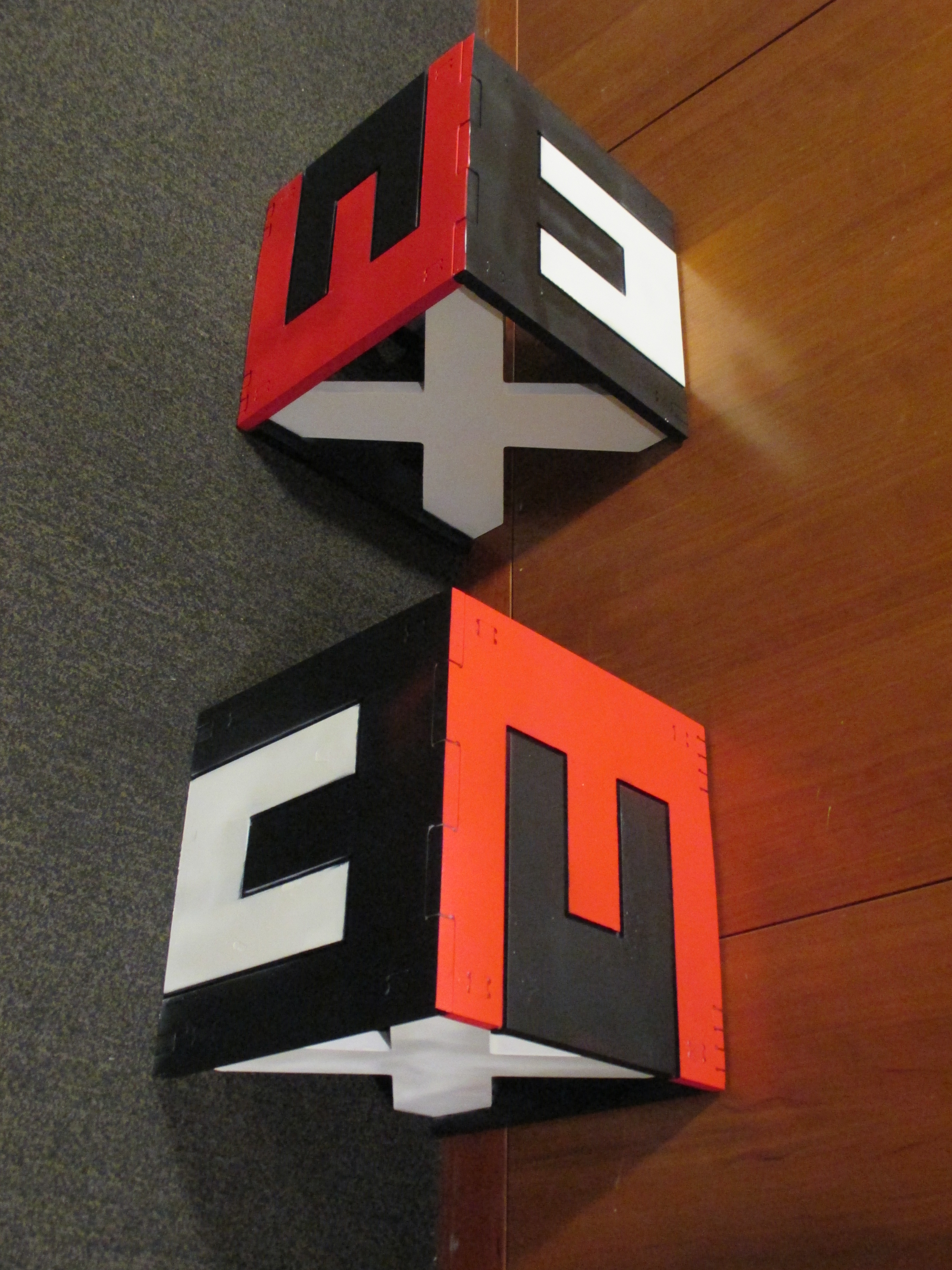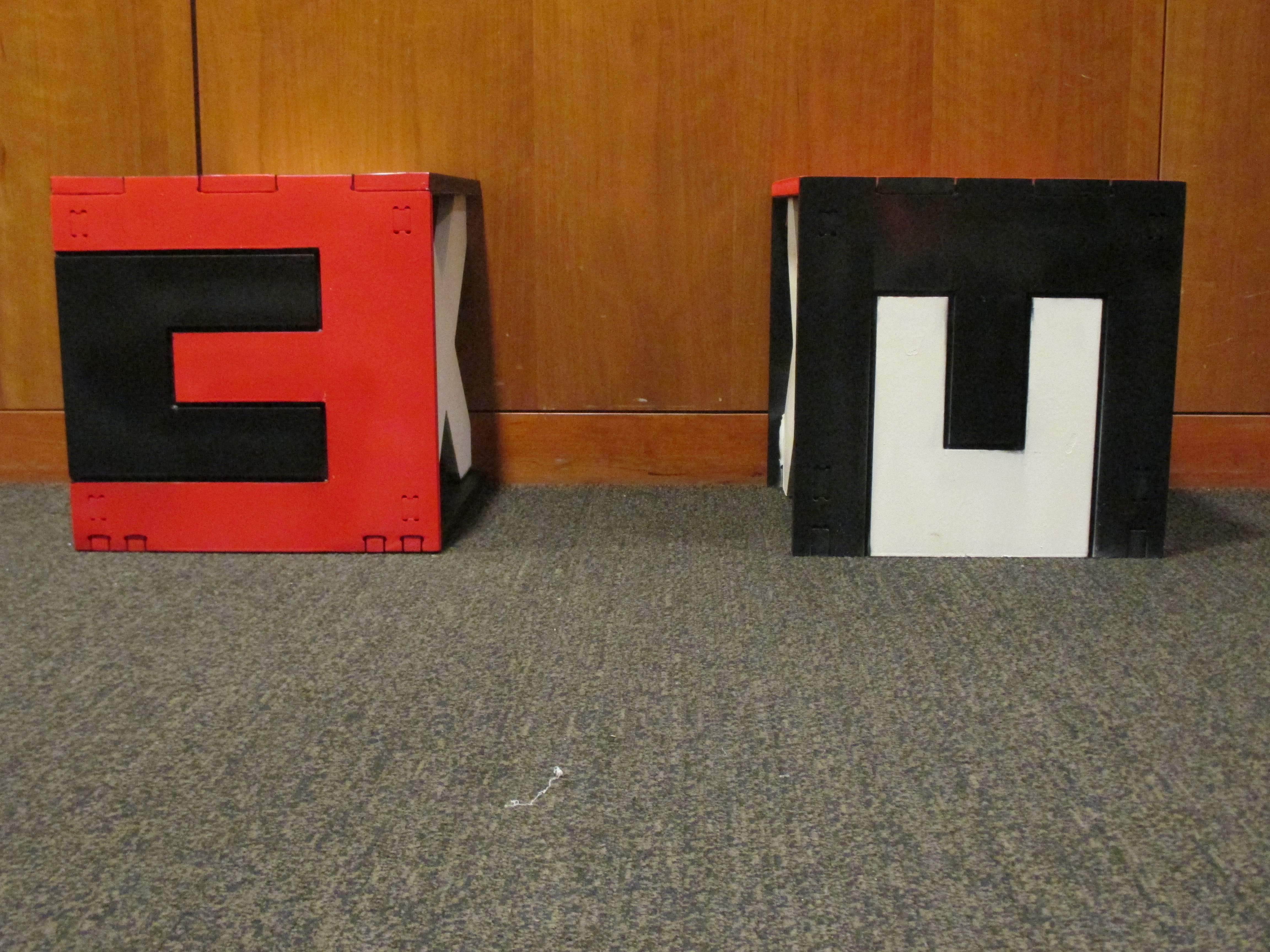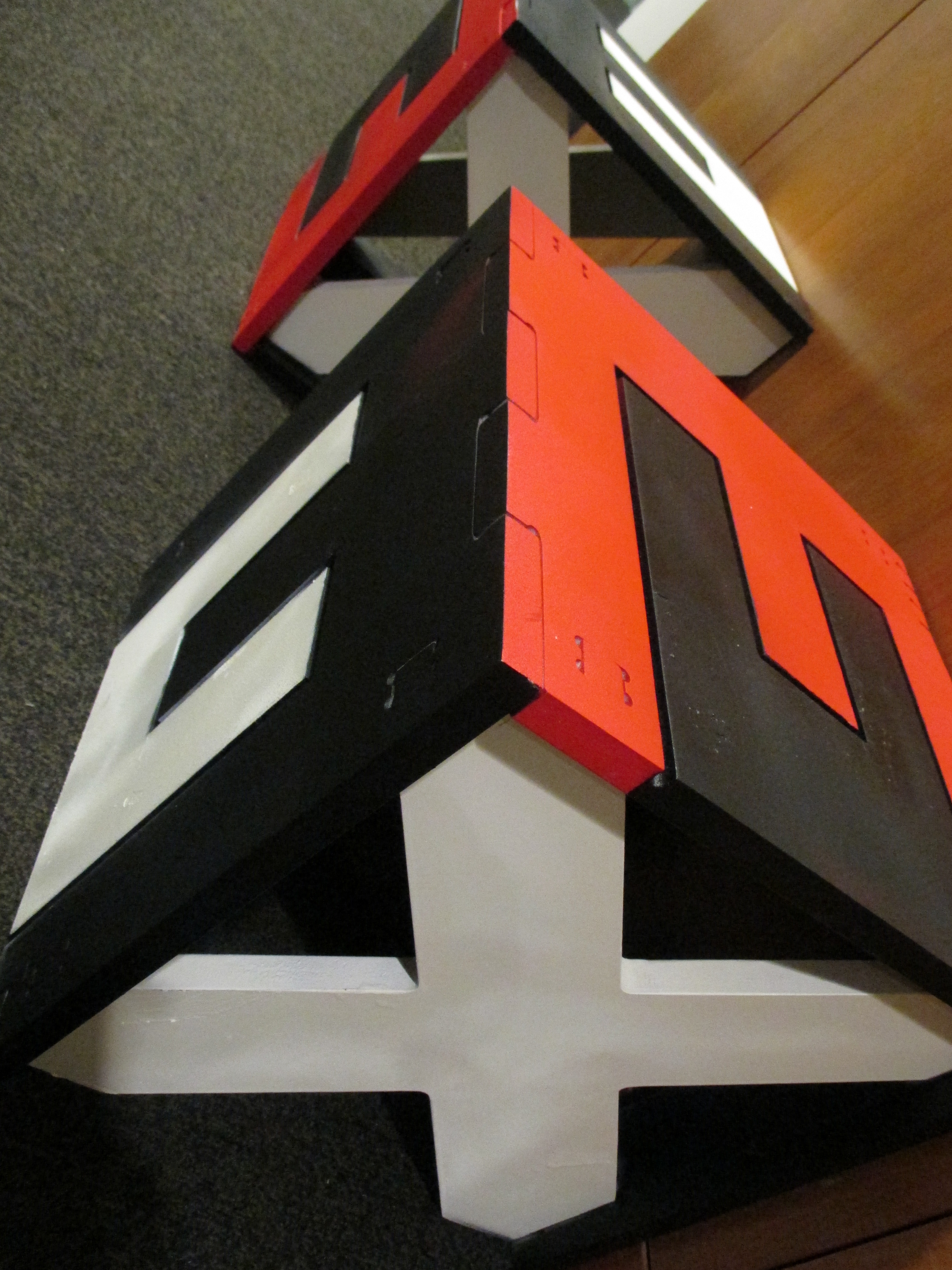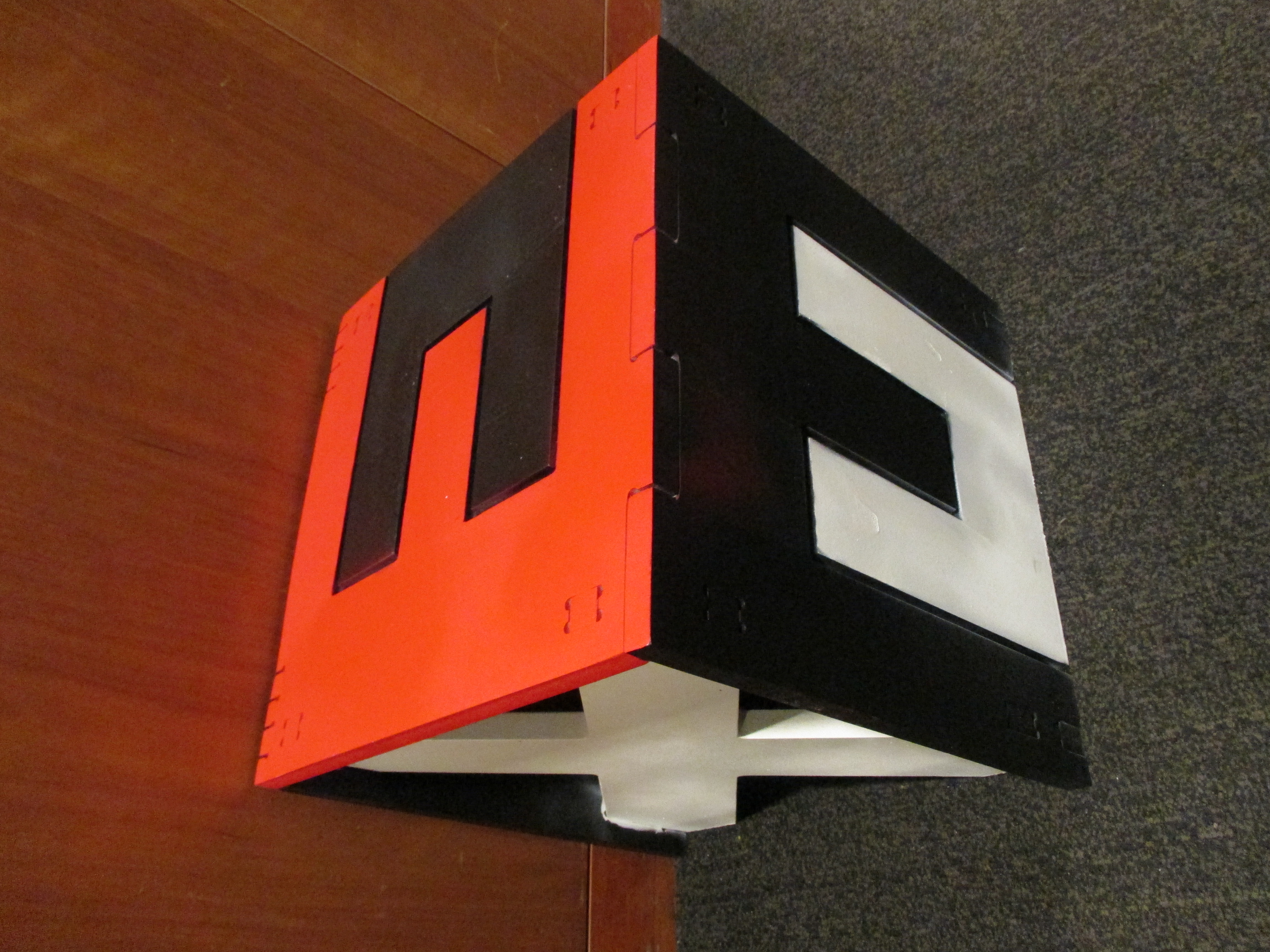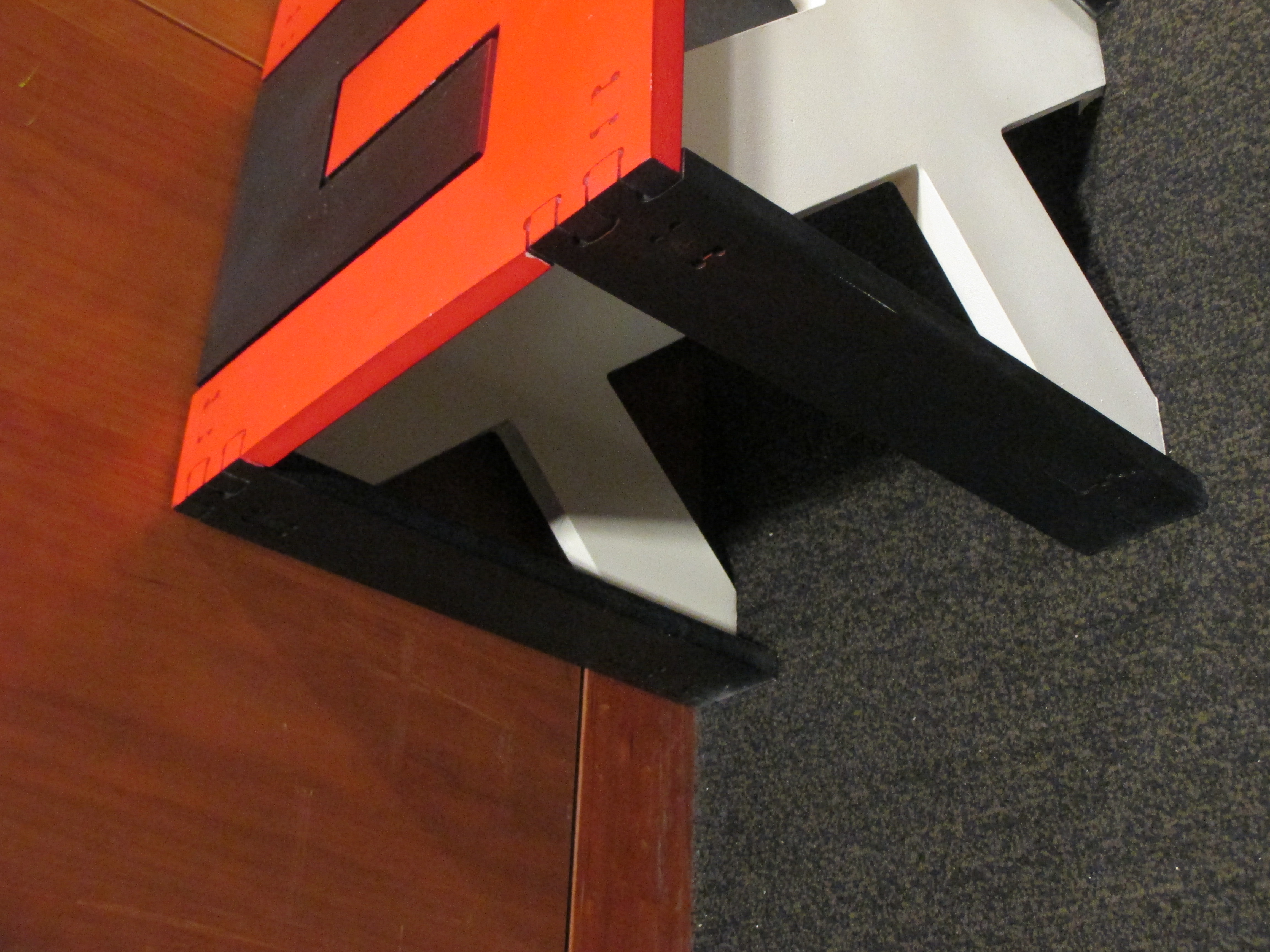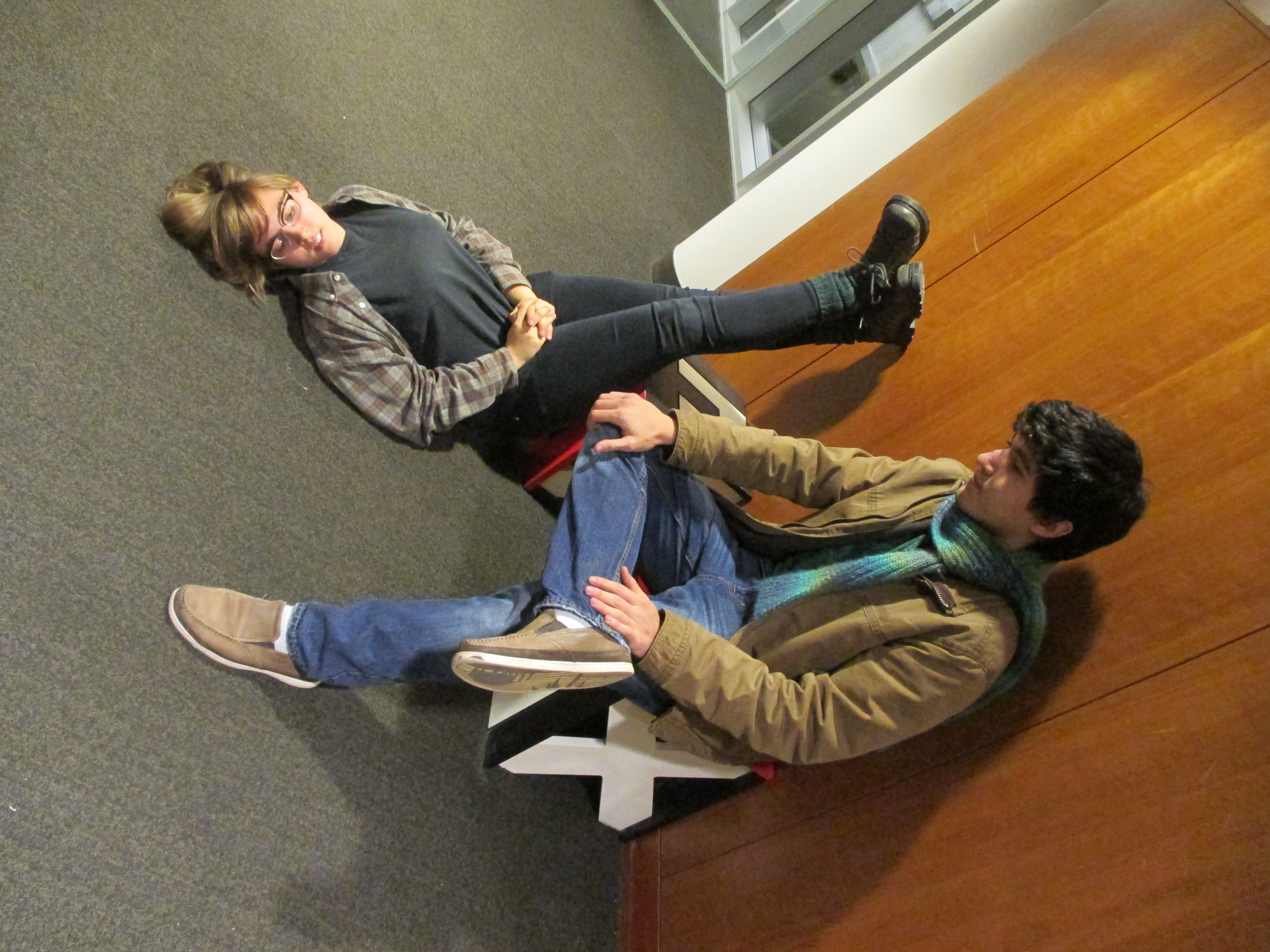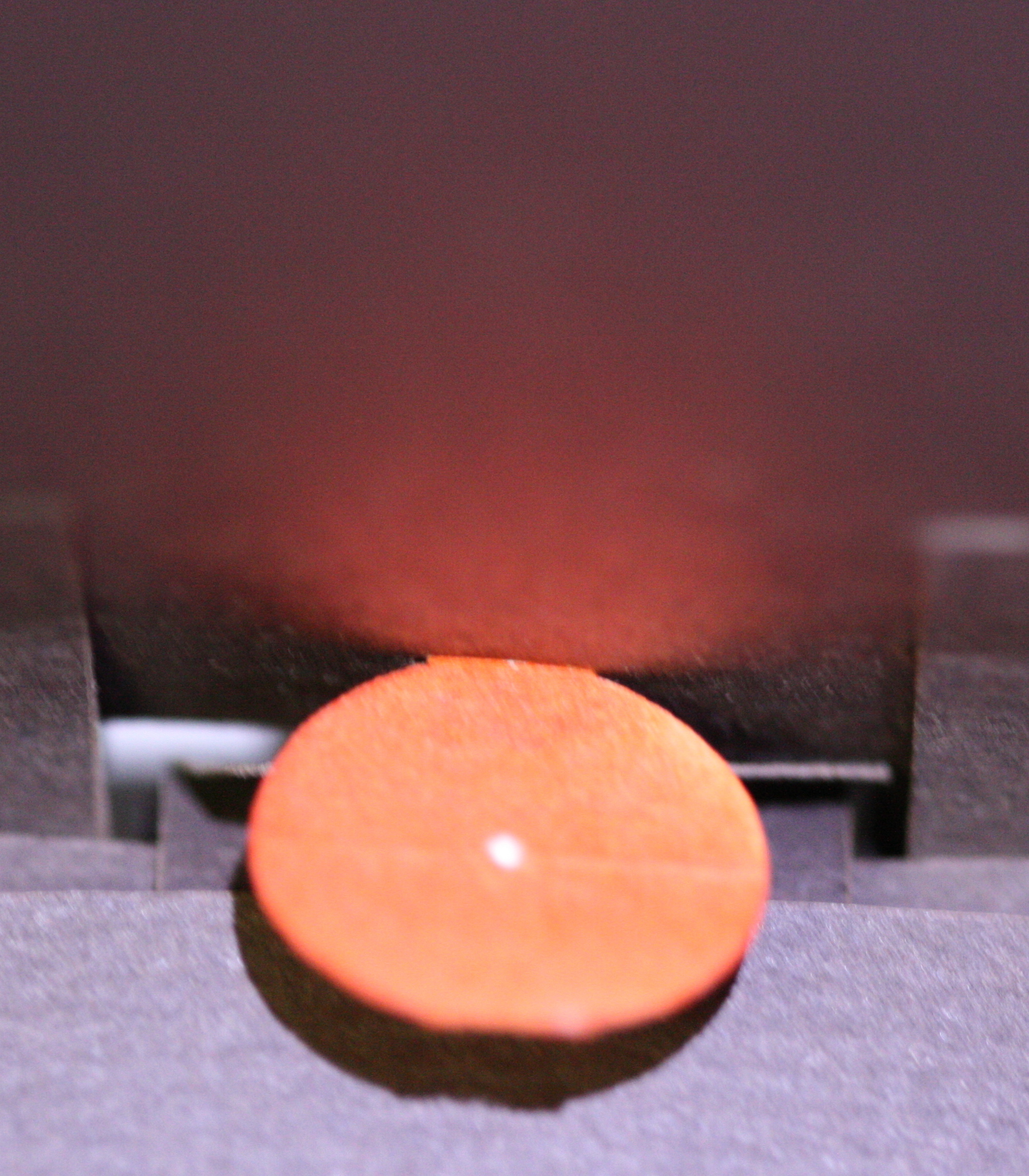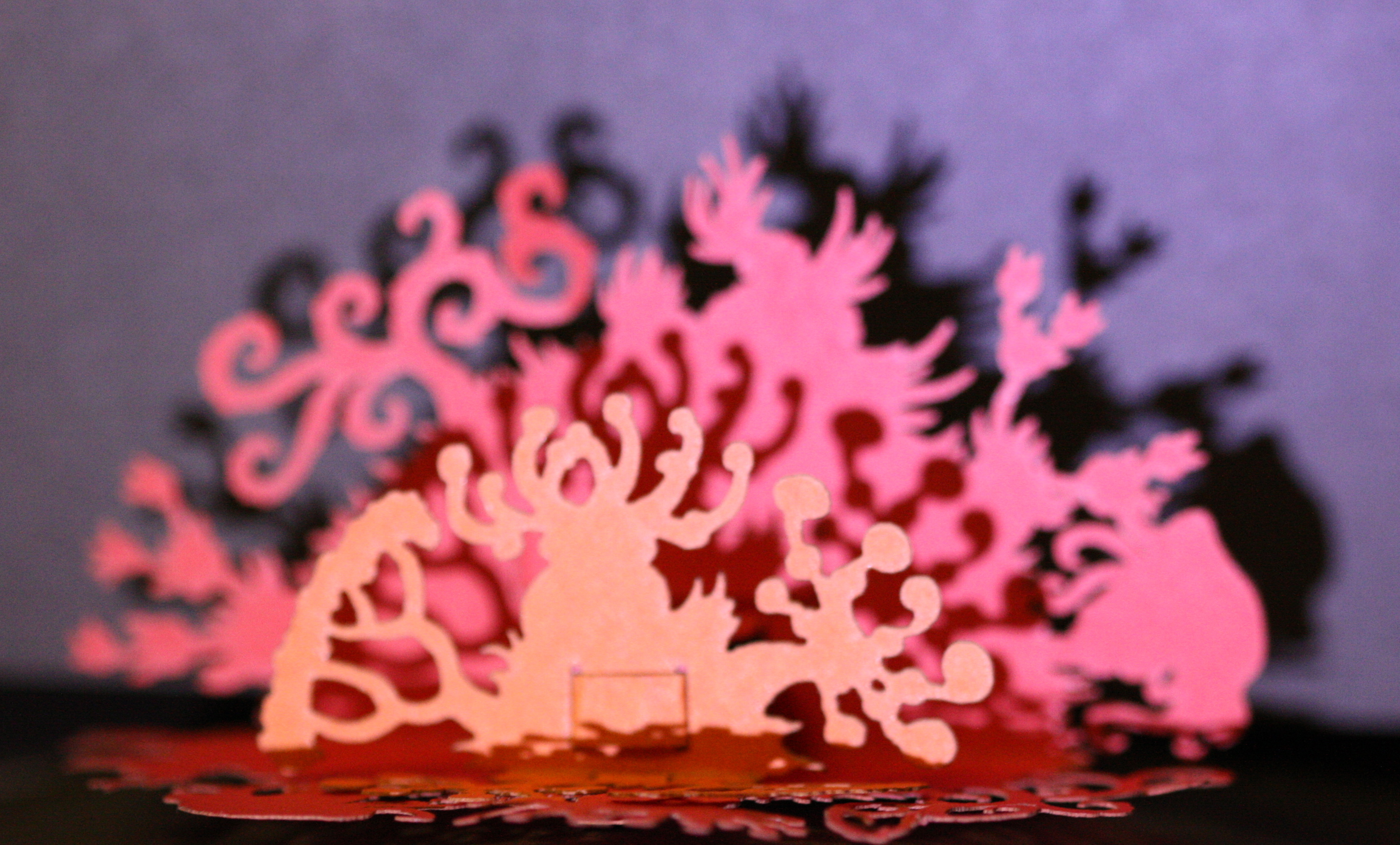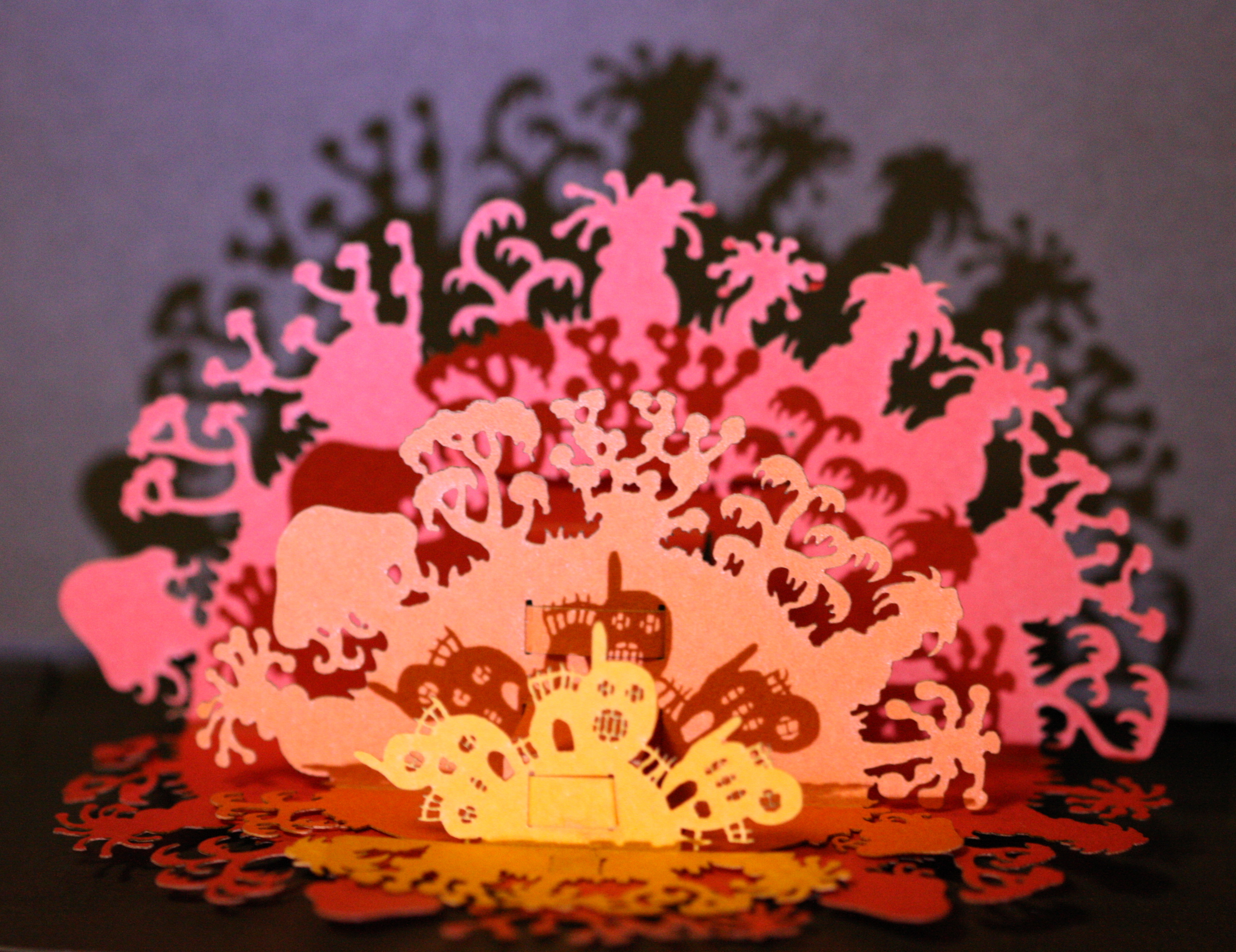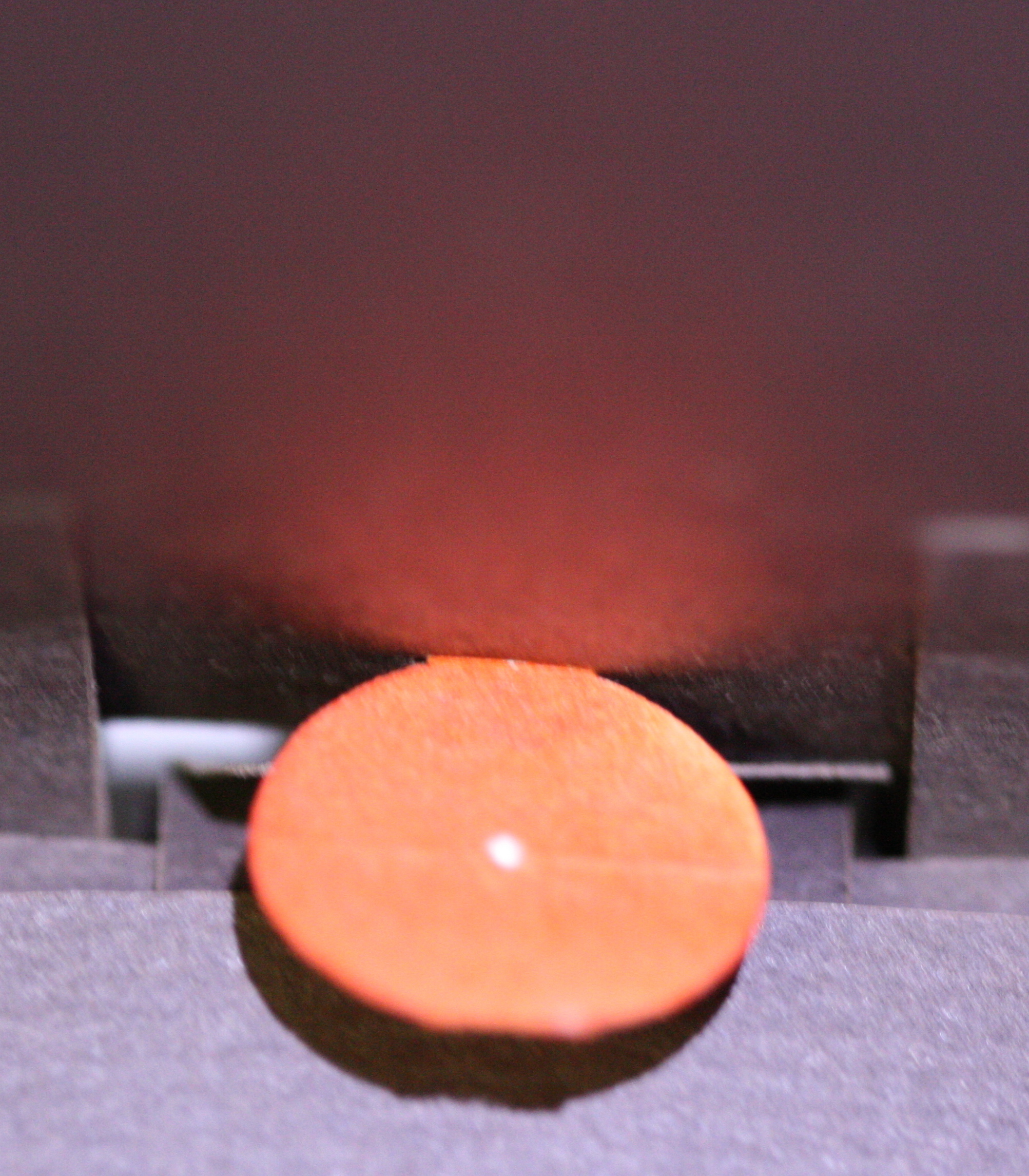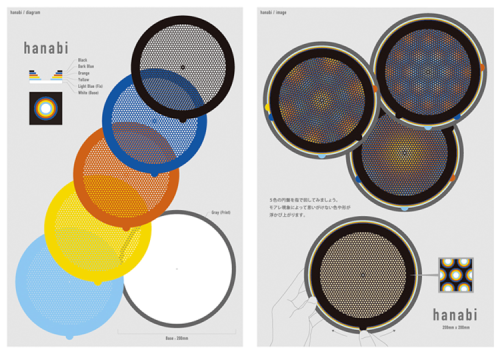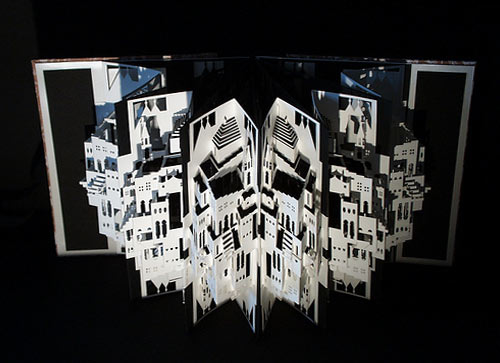Instrument of Persuasion: “Unreasonable Reasons” by Natalie Moss (2013)
“Unreasonable Reasons” was inspired by a psychology experiment in which the word “because” was shown to have the power to persuade people even when paired with an unreasonable reason, in tandem with the prompt “instrument of persuasion.” The word “because” is displayed behind a glass window in a library, where people tend to trust in words and take them at face value. If the viewer is to see the rest of the piece, it is necessary to walk a long and roundabout path to reach the other side of the glass. Even then, it is difficult to comprehend all of what the words which appear from other angles mean, or even to see some of them in the first place. Most viewers would likely not choose, or even think, to make the trip, and those who did would quite possibly not see the full message. This arrangement is a metaphor for the way such commonplace persuasive words are treated. Many people do not realize their impact, and those who are told (including myself, on occasion) often think on the notion briefly and then proceed to treat words as they always have, rather than putting in the effort to comprehend the full impact of the ability to persuade with unreasonable reasons. The side views, which are most difficult to read, say “but we want a reason” and “to be unreasonable;” the back reads “control,” which was eerily enough the word which resulted from the letters in the side phrases that were not in “because” (with the exception of w, which I eventually transformed into a C/W hybrid). Control fits as a culminative phrase, however, because the piece is about the control words have over how we think, to the extent that we don’t even think about or realize that control.
A thank you to Ben for helping me set up the piece for photos, to Ali for helping me find the pedestal, and to the various people whose names I don’t know who held doors for me while I was transporting this piece.

